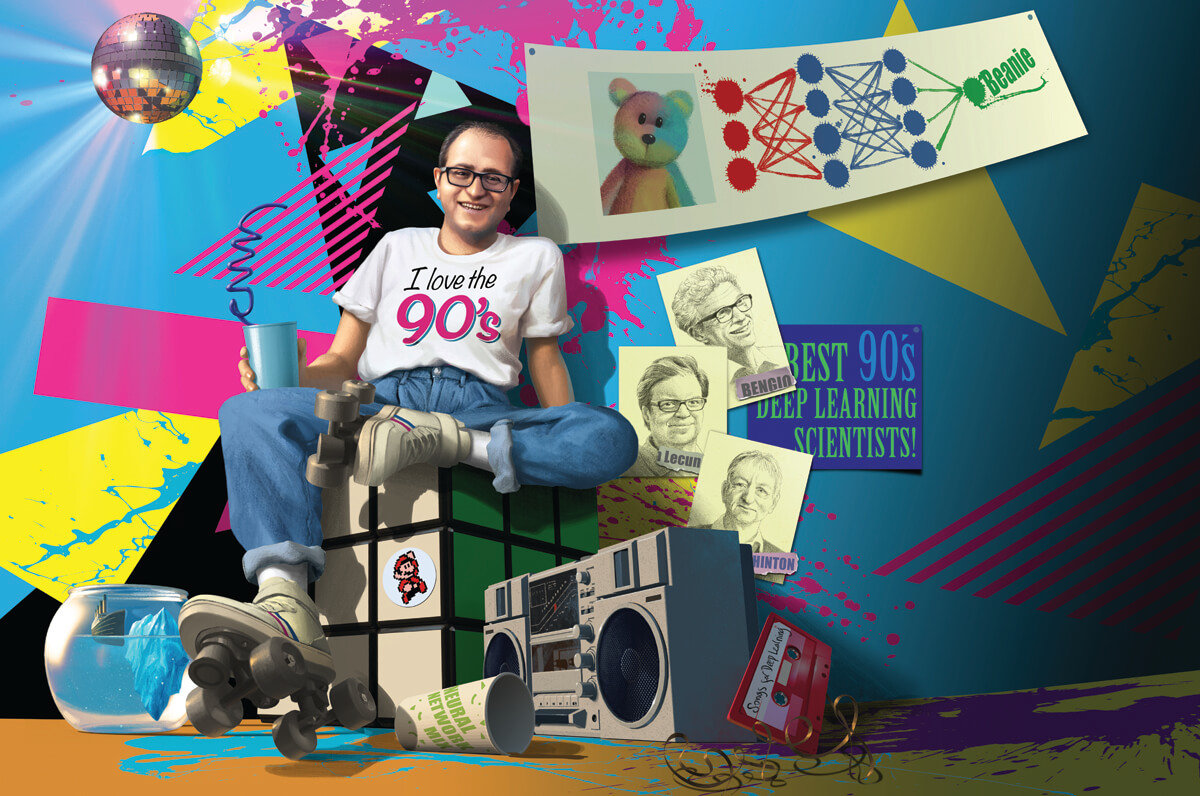A ’90s Flashback Party (For Algorithms)
Have you ever been to one of those played-out ’90s parties? You dig deep into your closet to find a shirt you haven’t worn in decades with the appropriate cultural reference printed on the front. Some song that takes you back to your senior year of high school is playing in the background.
This brings us to the work of Mahdi Soltanolkotabi. In the 1990s, developers created a lot of trendy AI models and algorithms. These models were interesting, but the world wasn’t ready for them, much like how some musicians are rediscovered years after their deaths and bemoaned for being “ahead of their time.” The technology didn’t exist for these models to be appreciated.
Take neural networks, for example. In 1998, banks were using a simple neural network called LeNET-5 to recognize handwriting on personal checks. Today, with more powerful computers and larger data sets, neural networks have be-come one of the cornerstones of computer vision, natural language processing and many other disciplines. Instead of interpreting someone’s sloppy handwriting, modern deep neural networks, a.k.a. deep learning, are becoming instrumental in technologies like autonomous vehicles and medical imaging analysis.
Suddenly, not fully understanding models like deep neural net.works and how they are trained is dangerous in the human-facing services they support. A car might fail to stop for a pedestrian or a deserving candidate may be passed up for a job. Soltanolkotabi, an assistant professor in the Ming Hsieh Department of Electrical and Computer Engineering, is making sure these models and algorithms are safe and reliable by understanding them, perfect.ing them and avoiding their failure modes.
“In modern AI, we use a lot of heuristic models and algorithms to make things work,” Soltanolkotabi said. “But we have no idea why these models and algorithms work when they do or why they fail when they don’t!” In simpler times, he said, when people were using artificial intelligence for things like generating internet ad revenue, a misunderstood algorithm might mean some lost money. But today, AI is at the center of all kinds of human-focused technologies, like self-driving cars, robotics, and medical diagnostics. We simply cannot accept models and algorithms we don’t completely understand wielding so much influence over our lives.
His work has not gone unnoticed. Soltanokotabi, the Andrew and Erna Viterbi Early Career Chair, has already been named a 2019 Sloan Research Fellow, as well as the recipient of a NSF CAREER Award, a Packard Fellowship and an Air Force Young Investigator Award.
The excitement over Soltanolkotabi’s work really comes down to one thing: people. Technologies like AI and automation are changing our world in ways that we do not fully understand. It may sound counterintuitive, but Soltanolkotabi’s theoretical development is ensuring that our world, even in the face of these changes, remains a world with humanity. Now that’s something worth celebrating.




